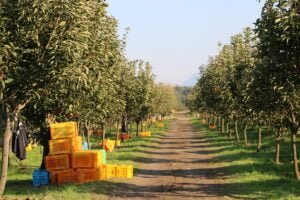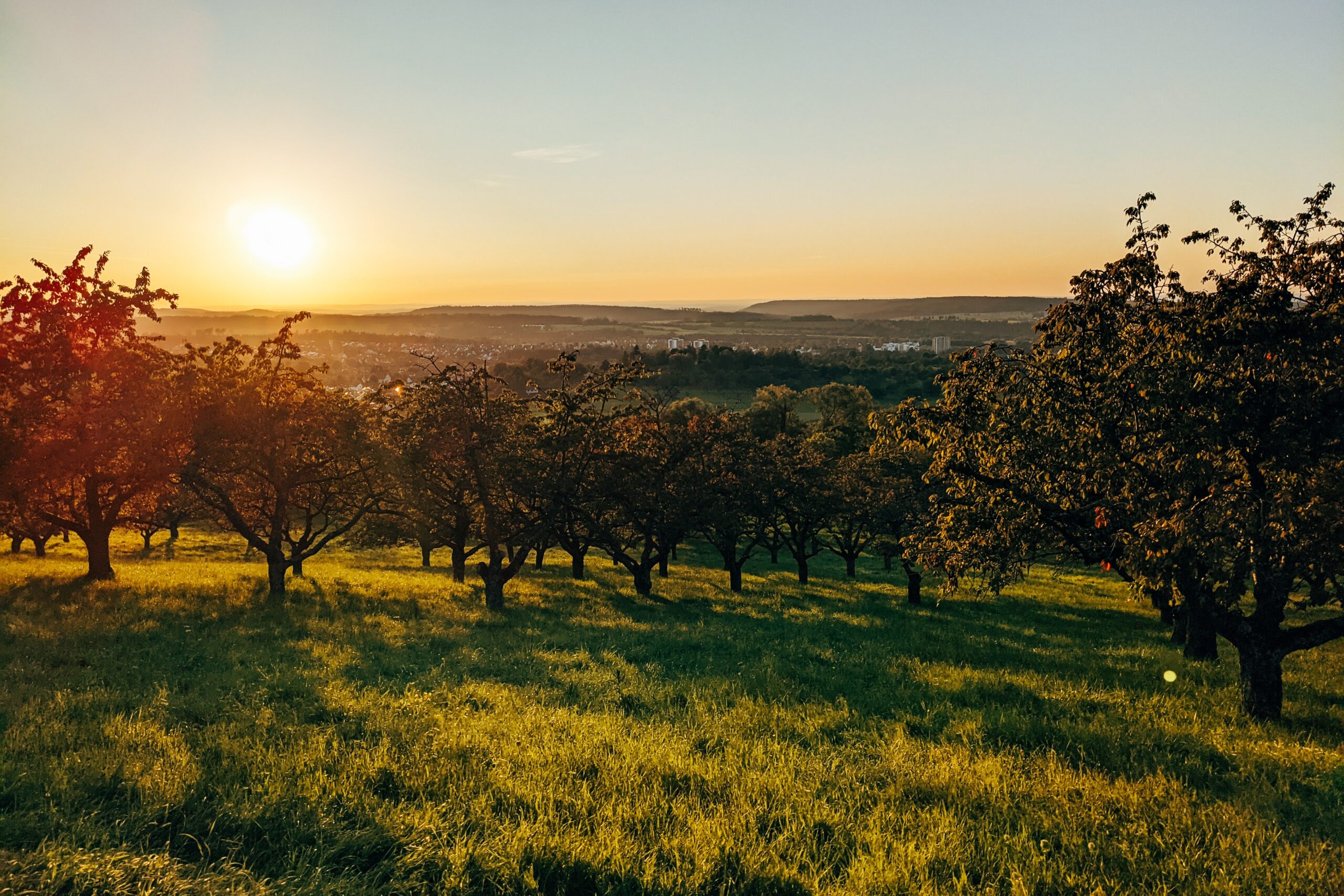Systems for orchard layout
A variety of systems for orchards layout are available. The benefits and drawbacks of various systems are discussed below.
Square system for orchard layout
The most common and popular method of putting out fruit orchards on flat ground is the square scheme. Plants are arranged at right angles to each other in this approach, with equal row-to-row and tree-to-tree spacing. For long-lived permanent trees of major fruits like mango, citrus, guava, apple, or pear, this is the best approach. It’s simple and straightforward to put together.
The ability to inter crop, the ease of two-directional cultivation, and the convenience of irrigation, spraying, and harvesting are all important factors in its appeal. The quincunx and rectangle layout systems are built around it. The sole disadvantage of this orchard layout system is that some unutilized area remains in the centre.
Rectangular system for orchard layout
The row-to-row distance in the rectangular arrangement is greater than the plant-to-plant distance. This technique is best for trees that are medium to large in size. The trees are placed at the corners of the rectangle in this case. In a variation of this technique, the plant-to-plant distance is set to half the row-to-row distance, and every other plant is removed halfway through the tree’s bearing life.
This method is used to produce the best results in the first few years after planting. However, because the area is not fully utilized and crowding develops on two sides, the rectangular design is not ideal for permanent trees. To allow the plants to grow normally, a lot of pruning is required, and only one-way cultivation is possible in the gardens.
Read Also:- Fruits for weight loss
https://mianfarms.com/fruits-for-weight-loss/
Hexagonal systems for orchard layout
This is the greatest approach for garden layout because all plants are equally spaced apart and there is no wasted space between them. A grid of consecutive equilateral hexagons forms the layout. Trees can be found at each vertex as well as at the centre of each hexagon, equidistant from all of the vertices. This can also be conceived of as a grid of equilateral triangles with the desired tree-to-tree distance as the length of each triangle’s edge.
Each triangle’s vertex is occupied by a tree. The long-term ideal tree is planted in the hexagon’s centre. In comparison to the square method, about 15% more plants can be planted. This layout technique allows for three-directional cropping in orchards. The only drawback to this approach is that it is more difficult to set up and understand at first.
Quincunx system for orchard layout
After laying out the garden according to the square method, an extra tree is planted as a filler in the centre of each square in this scheme. Quick-bearing filler plants should be planted in between the long-lived, slow-bearing fruit trees. Later on, the filler plants are uprooted. This method allows for 75 percent more plants (fillers) to be planted than the square scheme. The proportion by which the number of trees can be raised is determined by the orchard’s total size. Until the primary fruit trees start fruiting properly, these fillers can provide higher yields than inter crops. The fillers, on the other hand, may impede the growth of the permanent trees.
Triangular system for orchard layout
After setting out a rectangular system, one tree is planted at the junction of the diagonals of each rectangle in the triangle arrangement. This technique produces roughly 50-60% more plants than the rectangular system, with the proportion of increase variable depending on the orchard’s total size. However, as time goes on, this approach produces overpopulation, which presents issues with cultural operations. This method is not well-liked and is rarely used.
Contour systems for orchard layout
All of the above methods may only be utilized on flat or level ground, not on hilly or sub-mountainous terrain. Fruit trees must be planted on terraces on undulating plains and hill slopes, and spray watering is generally employed. Cover crops should be planted in alleyways to decrease runoff and soil erosion.
Trees can be planted in lines that follow the contour of the slope on land with just a modest slope. The rows are then irrigated and cultivated just along their lengths, not across them. The trees will not be evenly spaced, and the quantity of trees per hectare will be lower than in other systems, but the benefits will exceed these drawbacks. Each contour may become a terrace if the ground is particularly steep. So, these are the main systems for orchard layout.

very good
ANAND NAWAL